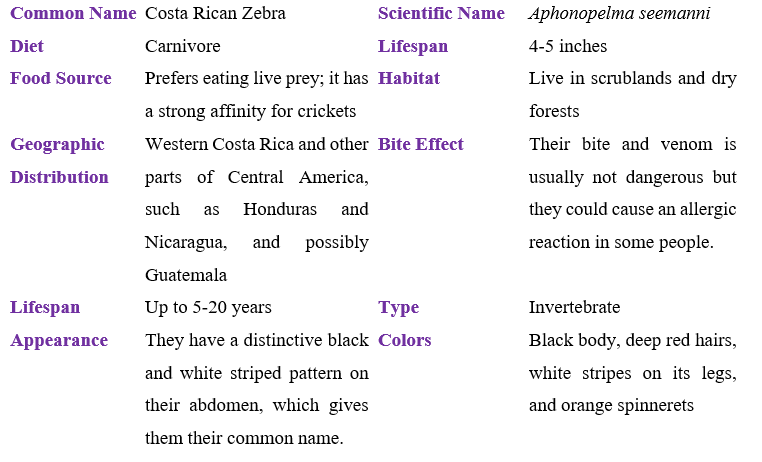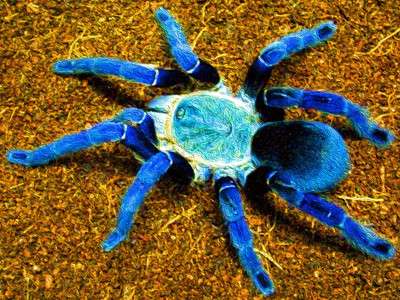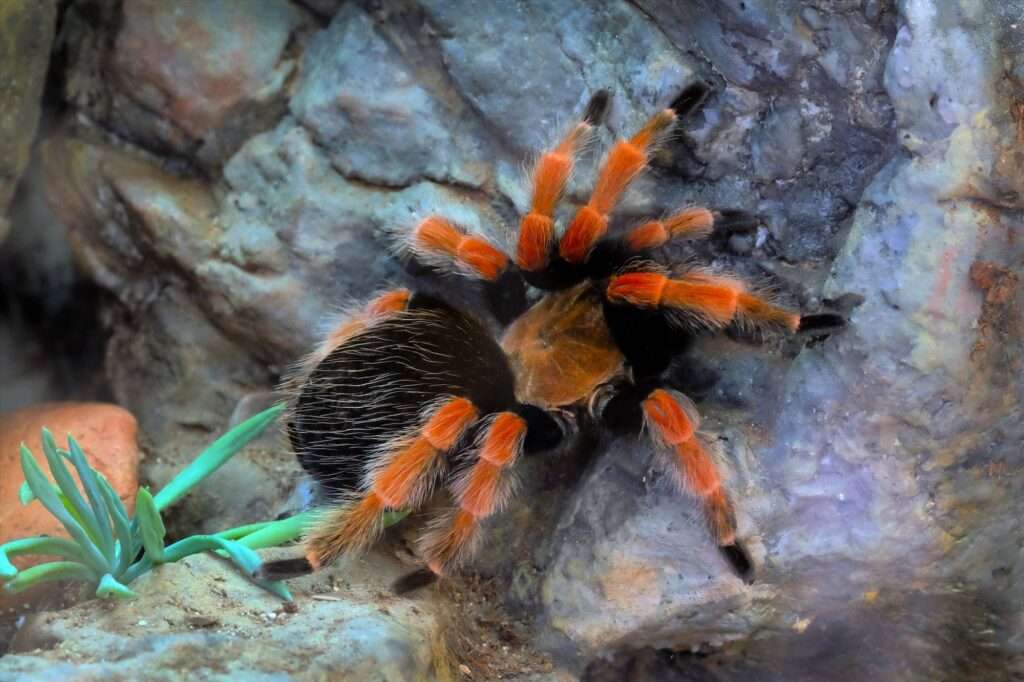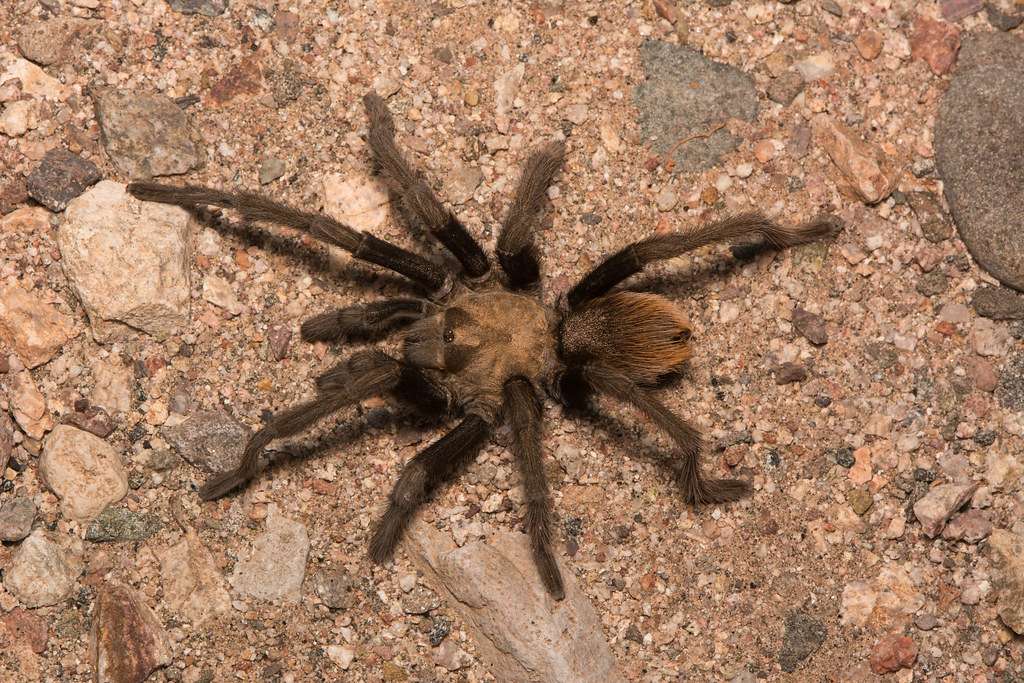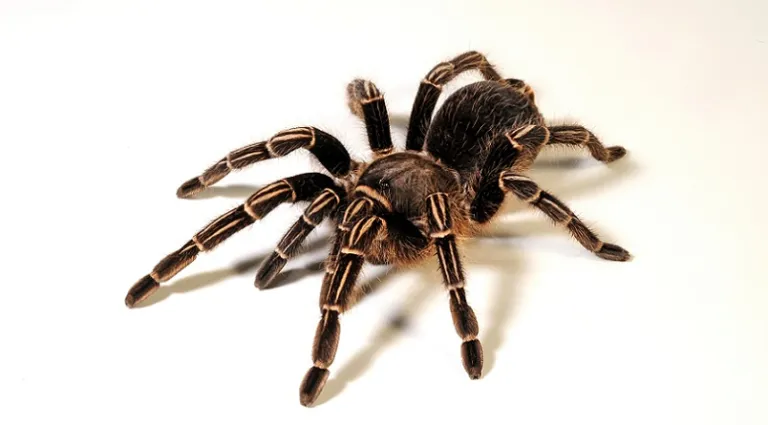
Description
The striped-knee tarantula, sometimes known as the Costa Rican zebra tarantula, is Aphonopelma seemanni. The female Costa Rican Zebra Tarantula can have a leg span of up to five inches, whereas the males are normally smaller. Their common name comes from the unique black and white striped pattern on their abdomen. Their body is encased in a hard exoskeleton that helps defend them from predators, and their legs are covered in thick hair.
Geographical Distribution
This particular species of tarantula is found over much of western Costa Rica, as well as Honduras, Nicaragua, and maybe Guatemala.
Behavior
Because of their swift movement, Costa Rican zebra tarantulas are not recommended for people who enjoy handling their pet spiders. Although they normally have a calm demeanor, they can suddenly dart away and are exceedingly challenging to catch and restrain. This kind of spider might become hurt if you try to catch it or even just pick it up. However, some knowledgeable owners can handle their Costa Rican zebra tarantulas with care.
These tarantulas don’t typically bite, although they might do so if they feel threatened. Additionally, it’s crucial to remember that they do have toxic venom.
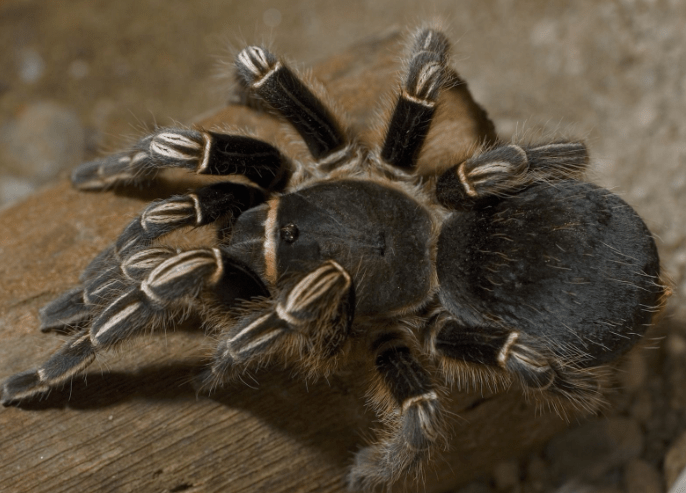
Care as Pet
Housing
Costa Rican zebra tarantulas do well in aquariums that are between five and ten gallons. The tank should be two to three times the spider’s limb span in width and nearly three times that in length. It should be fine to be around a foot tall. There are also spider terrariums available that are made expressly for the protection of the tarantula and ease of access for you to the enclosure.
Add a hollow wood, cork bark, a tiny clay flowerpot turned on its side, or a store-bought spider house for protection to the habitat. Additionally, other climbing supports should be placed all over the cage, such as imitation vines and plants.
Temperature, Humidity, & Lighting
Keep the temperature within the tank between 70 and 85 degrees Fahrenheit. The ideal humidity range is between 75% and 80%. Unless your home is extremely cool, you probably won’t need additional heating. Simply place a heating pad made for spiders underneath the habitat in such instance.
Tarantulas don’t require extra lighting or excessive amounts of light. These tarantulas receive more than enough light from your room and windows.
Water and Food
This carnivore prefers to consume live food, like most tarantulas, and has a particular fondness for crickets. As long as they are smaller than the spider’s body, it can also consume other insects. Additionally, if you want more protein, you can occasionally give a pinky mouse.
For advice on the proper feeding plan for your specific spider, speak with your veterinarian. Depending on its age and size, this can vary slightly. Juveniles of the Costa Rican zebra tarantula normally eat every one to two days, whereas adults typically eat once or twice each week. Drop the live prey beside your spider to feed it. After 24 hours, throw away any unwanted prey to avoid stressing your spider. Remove any residual debris as well to maintain the environment clean.
Give your tarantula access to a shallow water dish so it has both a source of drinking water and humidity. To avoid drowning, make sure your spider can get in and out of the dish with ease. Every day, change the water. Additionally, remove any damp substrate by scooping it up to stop the formation of germs and fungi. Give your tarantula access to a shallow water dish so it has both a source of drinking water and humidity. To avoid drowning, make sure your spider can get in and out of the dish with ease. Every day, change the water. Additionally, remove any damp substrate by scooping it up to stop the formation of germs and fungi.
Table
